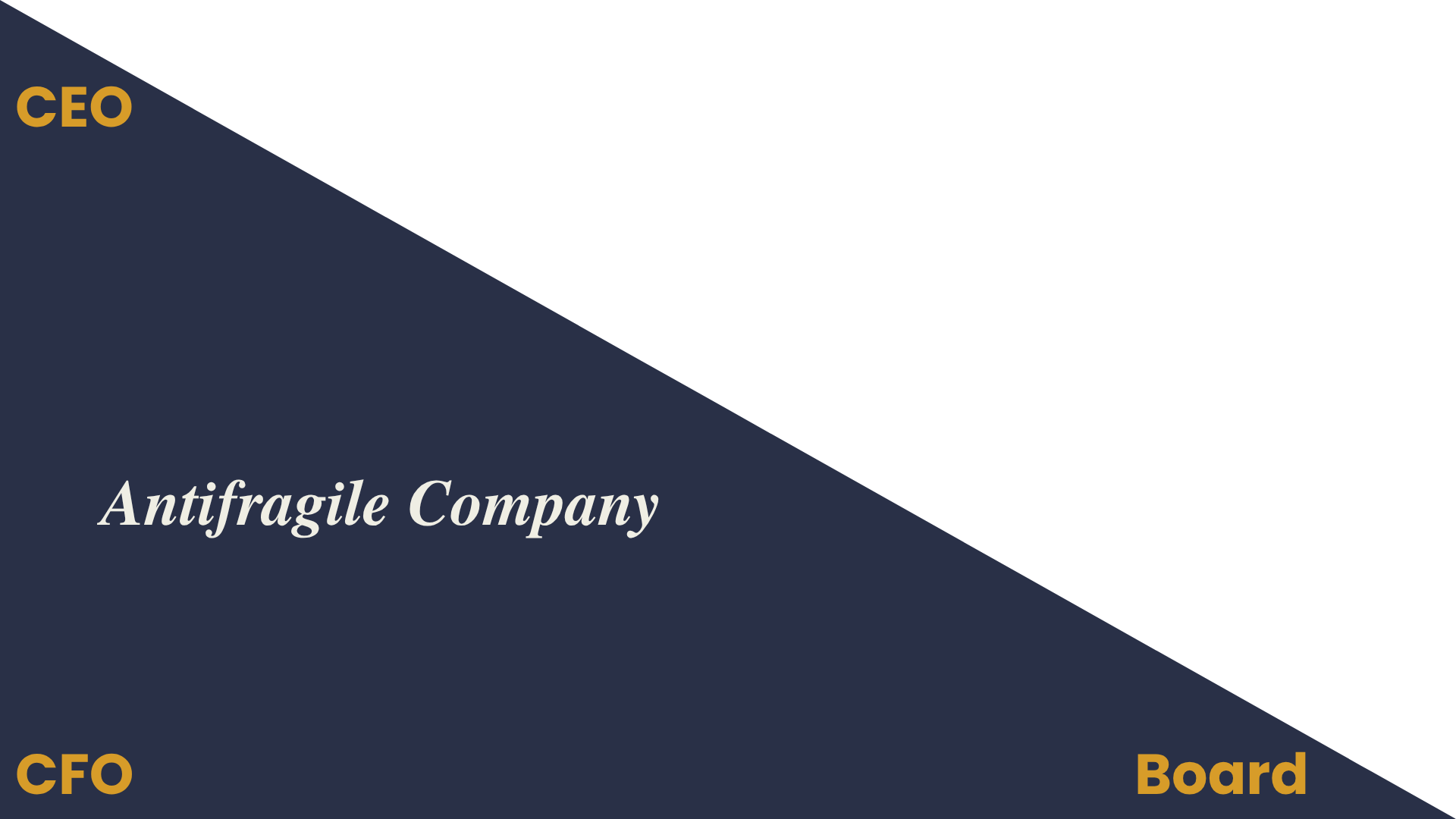• Discover why some businesses thrive in a crisis and how yours can too
• Learn what antifragility really means, and how it applies to you
• Read the real story of how alignment between the CEO and CFO unlocked $1.5m in revenue upside for one of my clients
Business leaders can't control interest rates, inflation, tech disruption, or geopolitics.
But they can build a business that not only survives external shocks, but is genuinely strengthened by them.
That idea might sound ludicrous right now, when every new day brings some fresh transnational drama, but history shows that it's very possible.
Some of the biggest companies in the world right now have survived world wars, multiple recessions, decades of competition and technological disruption and countless unexpected market shocks. Conversely, huge businesses have collapsed during periods of relative market calm.
The key differentiating factor? The strength of the business' internal relationships and systems.
In his book Antifragile: Things That Gain from Disorder, Nassim Taleb describes the concept of antifragility.
Most people understand that when something is fragile, such as a wine glass, that it easily breaks under stress. What they get wrong, however, is the idea that things that can withstand or survive stress (like a steel beam), are the opposite.
The opposite of fragile, is not resilient. It's antifragile. It's something that gets stronger under stress. Like our muscles after frequent sessions at the gym.
In business terms, an antifragile business is not one that can merely "withstand disruption" by "mitigating risk." It is a business that is structured and led in a way that allows for it to take advantage of opportunities to grow during periods of uncertainty.
Central to this is the relationships between the business' most senior leaders.
I liken it to a triangle with the CEO, the CFO and the Board sitting at each of the three points. (We call the relationship between these 3 parties The Golden Triad™.)
A triangle is the only polygon that maintains its shape when pressure is applied to its corners. This is why triangles, and not squares, are used in bridges and roofing. And why the triangle makes it the perfect visual representation for the importance of the CEO, CFO and Board relationship.
Each point has a different perspective.
Each one carries different responsibilities.
But in an antifragile company, the angles are always locked together. It doesn't need to be a perfect equilateral triangle, antifragility allows for different strengths and pressures at different times. The key is that the angles remain facing into one another. They distribute force rather than buckle under it.
I was recently reminded of this when coaching a client who wasn't feeling like his board was fully engaged or that his CEO understood exactly what he was trying to do. We ran a scenario planning session and discussed a $1.5m potential revenue upside the CFO had identified. The only thing standing in the way of his executing on that opportunity was alignment with the CEO. The process to get to alignment was straightforward.
$1.5 million dollars. That's a huge ROI on a tough conversation.
You can't control the external environment.
But you can control whether your business benefits from it. And the single most effective way to create an antifragile business is to strengthen the relationship between CEO, CFO and Board.
So if you're a CEO feeling that low-level anxiety about the future, ask yourself this:
Do I feel fully supported by my CFO and the Board?
And if you're a CFO sensing the same in your CEO, consider how you might help to absorb or distribute some of that force.
What kind of pressure would it take to expose a misalignment in your company and what could you do, today, to address it?
I'd love to hear your thoughts.


